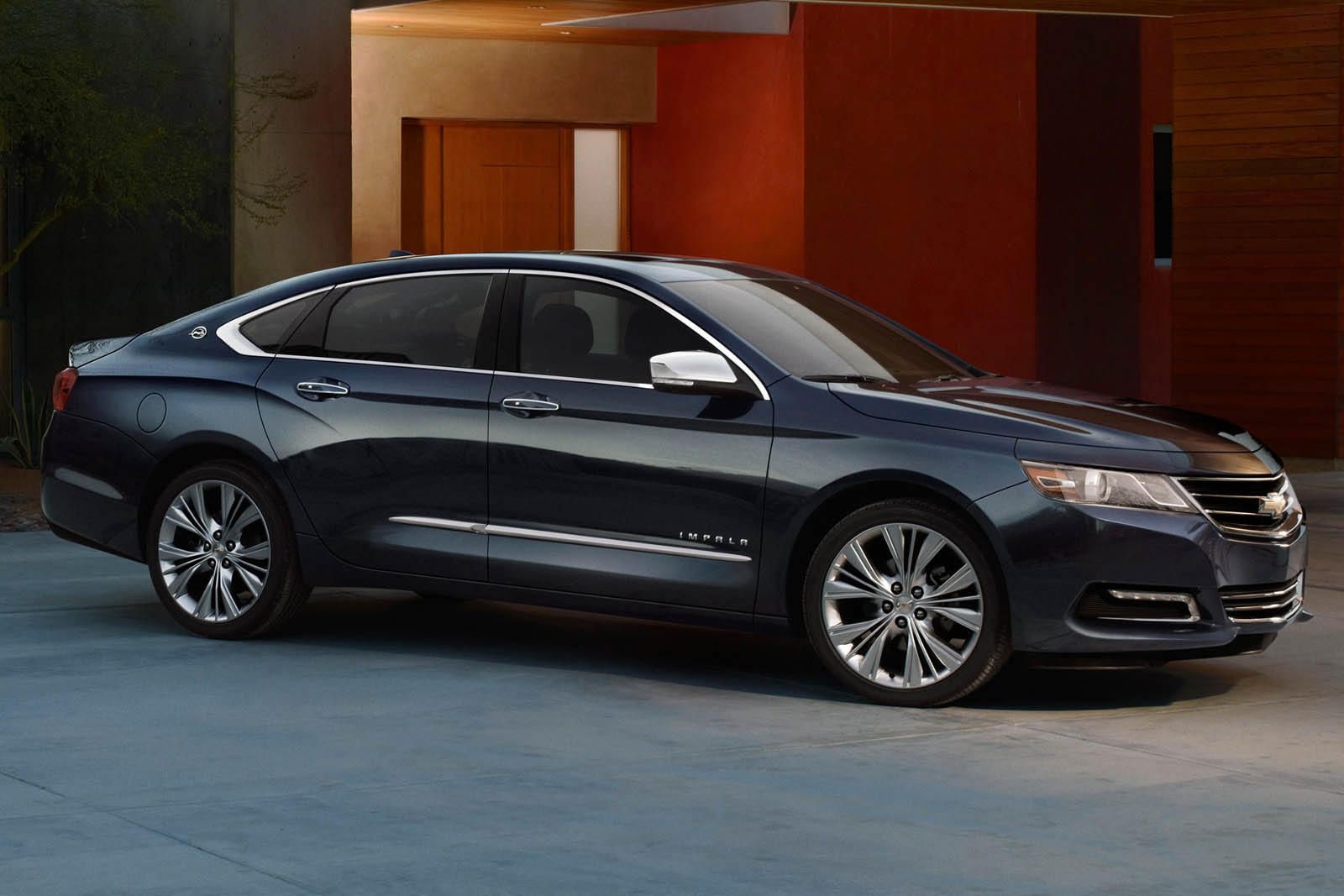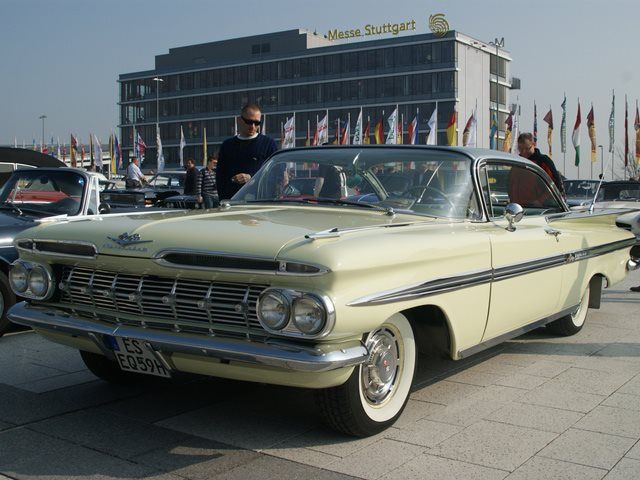
It should be pointed out here that when we talk about the Chevy Impala, we aren't talking about anything built after 1996. Nothing with front-wheel-drive will ever be a real Impala and that's the end of it. The Impala was one of the all-time greats in sporty full-sized cars. Too big and heavy to be an outright muscle car, the Impala was a high-speed cruiser, a compromise between performance and comfort which made it hugely popular. The name Impala was first used for a Motorama show car back in 1956.
Essentially a concept car, the Impala was a hardtop coupe which borrowed design cues from the Corvette and was designed with help from Pontiac. The car was a hit at the show, and a production version was green lit to debut in 1958. The production version looked very different from the show car, but the idea behind the car was unchanged. The first generation lasted only one year, and the second generation was produced only for 1959 and 1960. This second generation had the classic outward-protruding tailfins. These were massive fins, but less noticeable than those of the same year's Cadillac Eldorado, which had its fins positioned vertically.
It was in 1961 when things started to get really interesting. The Impala had already been offered with engines producing as much as 320 horsepower, but when Chevy debuted the third generation in 1961, there was an Impala SS model. The Super Sport package came with a number of sporty upgrades, but most significant was the increased number of engine options. The SS was available with engines ranging from the 305-horsepower 348cu-in (5.7L) V8 to the 427cu-in (7.0L) which made 425 horsepower. A 454cu-in (7.4L) engine was offered as well, but this maxed out at 390 horsepower.
Impalas equipped with the 427 engine were sold as a separate model, the SS427, from 1967 to 1969. This became the only SS model available in 1969, before the focus shifted to muscle cars and the Impala SS was cut from the lineup altogether. The Impala was Chevrolet's best-selling car during its third and fourth generations, as well as most of the fourth and part of the fifth. The Impala had actually gotten smaller with the debut of the third generation in 1961, although not so much that wasn't still quite large. This accounts for a large part of the car's popularity.
It was big without being absurdly huge, and nice without being ostentatious and overly expensive. It was powerful and quick without being as show-off-y as a muscle car as well, and was all around one of the only examples of an automotive compromise which still worked. That is to say, it was a compromise made in the name of making the car more appealing to customers instead of one made in the name of making GM a few dollars more per car. The Chevy Caprice had actually started as the top trim offshoot of the Impala and would eventually overshadow and then replace the Impala when it was discontinued in 1990.
In the ten years between this and the reintroduction of the nameplate in 2000, there were three glorious years in the history of the Impala. For 1994-1996, a performance version of the Caprice was sold with Impala SS badges. The engine was a 5.7-liter LT1 V8 out of a Corvette, but with cast iron instead of aluminum heads. It also had a camshaft designed more for low-end torque than top-end horsepower, which makes sense considering the weight difference between the two cars. The result was 260 horsepower and 330lb-ft of torque, which went to the rear wheels.
The car was quite different from other American cars being sold at the time, and sales were actually quite good. But despite the strong sales, GM killed the car off anyway because it needed the assembly line space for more SUVs (seriously). The Impala came back in 2000 and the SS was even back for 2004 and 2005. This new SS had GM's popular supercharged 3800 V6 and was actually quicker than the car from a decade before. But enthusiasts have always avoided these new Impalas, and since the upcoming tenth-generation car will also be FWD, this probably won't change.

